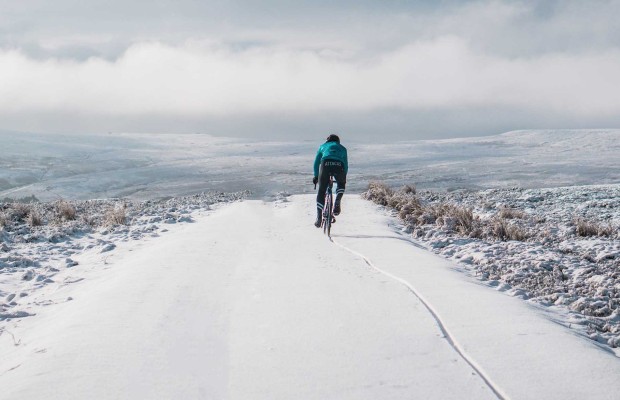La Vuelta a España 2024 will be epic: stages and profiles
The route for the 79ª edition of La Vuelta is now a reality. The organization has prepared three intense weeks that will start on August 17 in Portugal and will conclude on September 8 with a time trial in Madrid. In between, the peloton will essentially pass through the south and north of the country in a Spanish round that will be marked by the hardness of the eight mountain stages.
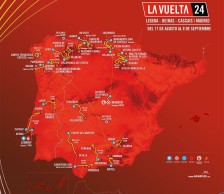
Vuelta a España 2024: route and profile of the stages of the 79ª edition
La Vuelta a España will start outside Spanish lands for the fifth time in its history. The caravan will start on August 17 in Lisbon -the second time it will start from the Portuguese capital after 1997-, will extend its stay in Portugal for another two days, will step on Extremadura to dispute the first mountain day, will pass through a good part of Andalusia for five intense stages, will move to the north to climb the hardest ports and will end with a time trial in Madrid.
The organizers classify the twenty-one stages as follows: one flat stage, five undulating stages (two of them with a high finish), five medium mountain stages, eight mountain stages and two individual time trials -first and last day-.
RECOMENDADO
The individual time trial of the first stage covers the 12 kilometers that separate Lisbon from Oeiras -a town where the Tagus river flows into the sea-. The river will be the backdrop of a day reserved for specialists, who will fight to win the first red jersey.
The peloton will remain in Portugal for two stages that will take place in the central part of the country. Cascais-Ourem (191 km) and Lousa-Castelo Branco (182 km) that will take the riders from the coast to almost touch the Spanish border -which at those latitudes is none other than the Tagus river-. Two stages of medium mountain that will most likely be decided in a sprint.
The caravan will step on Spanish territory for the first time on Tuesday, August 20 in a stage that will go from Plasencia to Pico Villuercas (167 km). First day of mountain in which the gasps will follow one another and the drops of sweat will run non-stop down the cyclists' foreheads. After a tough start and a truce in the middle part, the day will end on a high note with a first-class port.
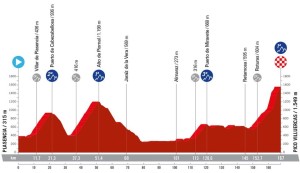
The fifth day of the race will be a time to recover legs in a flat stage from Fuente del Maestre to Sevilla (170 km). The slopes will disappear and the arrival in the Andalusian city is expected to be in a sprint.
The riders will gasp again on Thursday with the stage Jerez de la Frontera-Yunquera (181 km). Again mountain stage with a first category at the beginning. Despite three other third category climbs, the stage design will facilitate the success of the breakaway.
From here, there will be three days left until the first rest day. Archidona-Córdoba (179 km, undulating) with a tough climb 25 km from the finish where the survivors will play for the victory; Úbeda-Cazorla (159 km, medium mountain) with a second category port and finish in a third one; and Motril-Granada (178 km, mountain) really tough with El Purche and the double climb to Alto de Hazallanas -first category in both cases- with final descent.
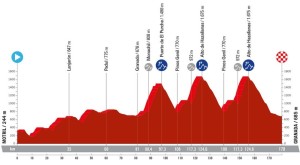
Tuesday, August 27, the race will resume in Galicia. Mountain stage Pontearas-Baiona (160 km). The riders will face ports that, while not colossal uphills, their demanding slopes and the little rest between them in the final part will force them to redouble their efforts.
La Vuelta will run on Galician roads for three more days. Stage 11 -will start and finish at the Campus Tecnológico Cortizo.Padrón (164 km)- conducive to breakaways with a small but suffered climb a few kilometers from the finish. The next day the stage Ourense-Estación de Montaña de Manzaneda (137 km) will be undulating and will finish high after climbing a first category port.
The route will finish its journey through Galicia with the stage Lugo-Puerto de Ancares (171 km). Pure mountain on a day marked in red for the leaders. The stage will climb to Puerto de Ancares by a slope never pedaled in the Vuelta: 7.7 km at 9% with peaks of 15% -and the final 5 km at a scandalous 12%-.

Immediately afterwards, the caravan will undertake the longest stage of the edition: Villafranca del Bierzo-Villablino (199 km); medium mountain with the Puerto de Leitariegos as the main attraction.
Before enjoying the second rest day, it will be necessary to complete Infiesto-Valgrande Pajares Cuitu Negru (142 km); the hardness will reappear in the brutality of Cuitu Negru -special category for a port that seems to have no end and that hides slopes of 23%-. The riders will face the final climb after having consumed significant efforts in the preceding ports.

The last week of competition will start with Luanco-Lagos de Covadonga (181 km). The race will head to this already classic visit to another special category port that will be the dessert after having whetted the appetite with two firsts. Again, exhausting hardness in another call to the leaders.

Next, there will be a double dose of medium mountain. First, Monumento Juan del Castillo Arnuero-Santander (143 km) in which the teams can move their pieces to reserve it for the sprinters; secondly, Vitoria Gasteiz-Maeztu Parque Natural de Izki (175 km), in which a high-level breakaway could prevail.
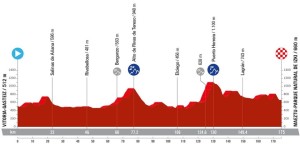
Already in the final part of the route, it will be the turn of Logroño-Alto de Moncalvillo (168 km): undulating with high finish of first category that will complicate a stage that otherwise is anticipated without major complications.
Stage 20. Mountain. Villcarcayo-Picón Blanco (171 km). The climbs will follow one after the other -seven in total- with hardly any time to regain strength and the end of the party will be Picón Blanco (first category), which will give the leaders one last and perhaps definitive difficulty.
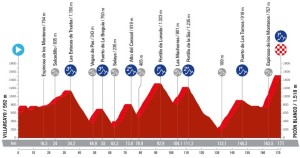
Stage 21. La Vuelta will say goodbye with a 22-kilometer individual time trial in Madrid. A day for the specialists to shine or to vibrate with a duel for the red if the overall arrives without a clear winner.
